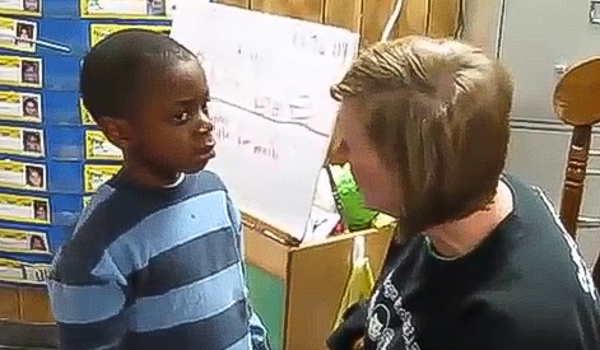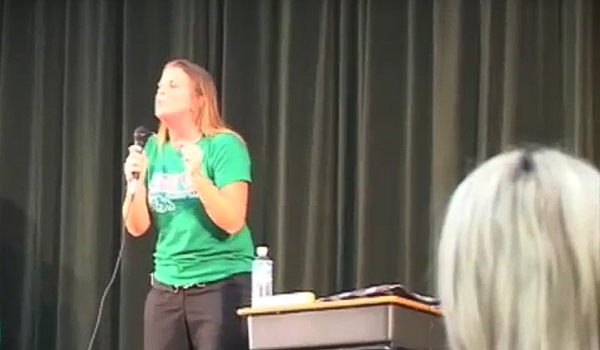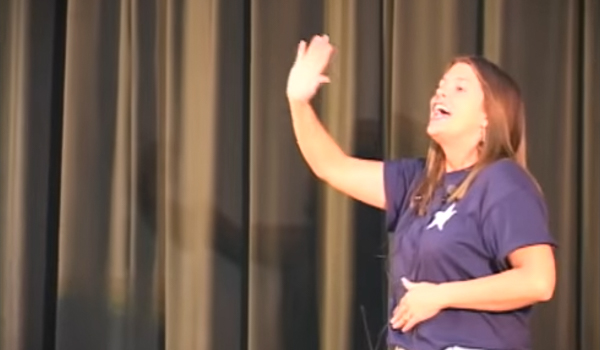
Chapter 9: Positive Intent
- Chapter 9: Positive Intent Resources
- Positive Intent Summary
- 1 - Power of Love
- 2 - D.J.'s Transformation
- 3 - Personal Storytelling
- 4 - Integrating the Right and Left Hemispheres
- 5 - How to Make a Bully From Scratch
- 6 - Bullying Road Signs
- 7 - Activity to Move From Negative to Positive Intent
- 8 - Using BIG Voices
- 9 - Activity to Practice Positive Intent for Hurtful Actions
- 10 - A.C.T. for Younger Children
- 11 - Biting Program: Reduce Stress, Teach a New Skill Before the Bite
- 12 - School Family Assemblies
Positive Intent Summary
- Power: Love: See the best in others.
- Becoming Brain Smart: Positive Intent integrates the brain and produces oxytocin, increasing trust, safety and moral behavior.
- Skill: “You wanted ___,” “You were hoping ___,” A.C.T., Reframing
- School Family: Celebration Center, Wishing Well, School Family Assemblies
 D.J.’s Transformation
D.J.’s Transformation
 Integrating the Right and Left Hemispheres
Integrating the Right and Left Hemispheres
 Bullying Road Signs
Bullying Road Signs
-

Bullying Road Sign #1 - Critical Interventions for 0-3 Years
-

Bullying Road Sign #2 - Critical Interventions for 3-5 Years Old
-

Bullying Road Sign #3 - Critical Interventions for 5-8 Years Old
-

Bullying Road Sign #4 - Critical Interventions for 8-12 Years Old
-

Bullying Road Sign #5 - Critical Interventions for Teenagers
 Activity to Move From Negative to Positive Intent
Activity to Move From Negative to Positive Intent
Exercise #1:

Exercise #2:

 Using BIG Voices
Using BIG Voices
 Activity to Practice Positive Intent for Hurtful Actions
Activity to Practice Positive Intent for Hurtful Actions
Situation 1:
Step 1 – Positive intent: “Sydney, you wanted Caleb to move so you could get a drink.
Step 2 – Notice: “So you pushed him.
Step 3 – State the missing skill: “You didn’t know the words to use.
Step 4 – Set limits: “You may not push. Pushing hurts.
Step 5 – Teach: “When you want a turn at the fountain, say, May I have a turn, please?”
Step 6 – Encourage: “You did it! You asked for a turn and Sydney was kind enough to let you in front of her.”
Situation 2:
Step 1 – Positive intent: “Noah, you wanted Angie to know you felt angry.”
Step 2 – Notice: “So you hit her.”
Step 3 – State the missing skill: “You didn’t know what else to do.”
Step 4 – Set limits: “You may not hit. Hitting hurts. It is not safe.
Step 5 – Teach: “When you want to let someone know you felt angry, say, I don’t like it when you ____. Next time say ____.”
Step 6 – Encourage: “You did it! You shared with Noah how you wanted her to treat you and she shared with you how she wanted to be treated.”
Video Demonstrations:
 A.C.T. for Younger Children
A.C.T. for Younger Children
 Biting Program: Reduce Stress, Teach a New Skill Before the Bite
Biting Program: Reduce Stress, Teach a New Skill Before the Bite
- Try to locate stressors in the toddler’s life: Not enough structure, too much structure, not enough rest, eating, bowel habits, connection, attunement, etc.
- Start a stress reduction program at home and school.
- More touching (skin to skin), body massage games (I am saying goodnight/goodbye to your legs, arms, hands, fingers, head, etc.)
- I Love You Rituals with attuned interactions
- Chest and lap time while downloading calm
- More visual schedules and routines
- Shadowing and teething necklace: There is nothing you can do to help a child learn other ways of getting his or her needs met after the bite has occurred. You must catch the child before the bite. Most bites occur during transitions and non-structured time. Have a person shadow the child who is biting. When the child begins to bite:
- Toss the teething cloth into the child’s open mouth. The mouth will close.
- Say, “You wanted _____(take an educated guess as to what the child wanted). Say _____(acceptable words) or do _____(acceptable action)!”
- Firmly say, “STOP. No bite! Ouch (make pained face) biting hurts.”
- Make visuals of alternatives to biting: My turn, play, move, etc.
- After age three, children usually bite when they feel powerless or scared, such as when they are losing a fight or think they are going to be hurt by another person. Children older than three who frequently bite other people may need to be seen by a doctor. This type of biting may be a sign that a child has problems with expressing feelings or self-control.

 School Family Assemblies
School Family Assemblies
Entrance Song
Activity to Unite
- Pledge of Allegiance
- Collectively recite school mission.
- Collectively recite “intention” for the month/week.
- Sing the school song.
- Use a music CD that goes with the program to expose staff and faculty to a variety of music.
- Create a School Family faculty song to a popular tune.
- Safekeeper ritual: I am willing to keep the meeting safe.
Activity to Disengage Stress
- Belly-breathing activities
- S.T.A.R., Balloon, Drain, Pretzel, bunny breathing, breathing arms, etc.
- Stretching (especially calves)
- Brain Gym activities
- Cross crawls to music
- Yoga moves or yoga story
- High energy songs that get the heart pumping or include stretching:
- Brain Boogie Boosters
- Tony Chestnut
- Head, Shoulders, Knees and Toes
- Physical Ed
- Many Learning Station CDs
Activities to Connect
- Greetings
- Commercial songs
- “It’s Brain Smart Time” – Kindness Counts CD
- “Get Ready” – It Starts in the Heart CD
- “Boogie Rock” – Brain Boogie Boosters CD
- Team building activities
- Content connections: Tell a partner one thing you learned from yesterday and give a high five.
- I Love You Rituals
- Wish Well / Absent Child Ritual
Activity to Commit
- Individual Commitments:
- Circle Up
- Journal writing
- Chart with names and commitment choices
- Group Commitments:
- Safekeeper chant
- Willingness cards
- Agreements: Listening ears, kind words, no put-downs, gentle touches and the right to pass (younger version). Attentive listening, appreciation, no put-downs, mutual respect and the right to pass (older version).
Ending Song and Exit
Video Demonstrations:
 Power of Love
Power of Love


 Personal Storytelling
Personal Storytelling

 How to Make a Bully From Scratch
How to Make a Bully From Scratch















